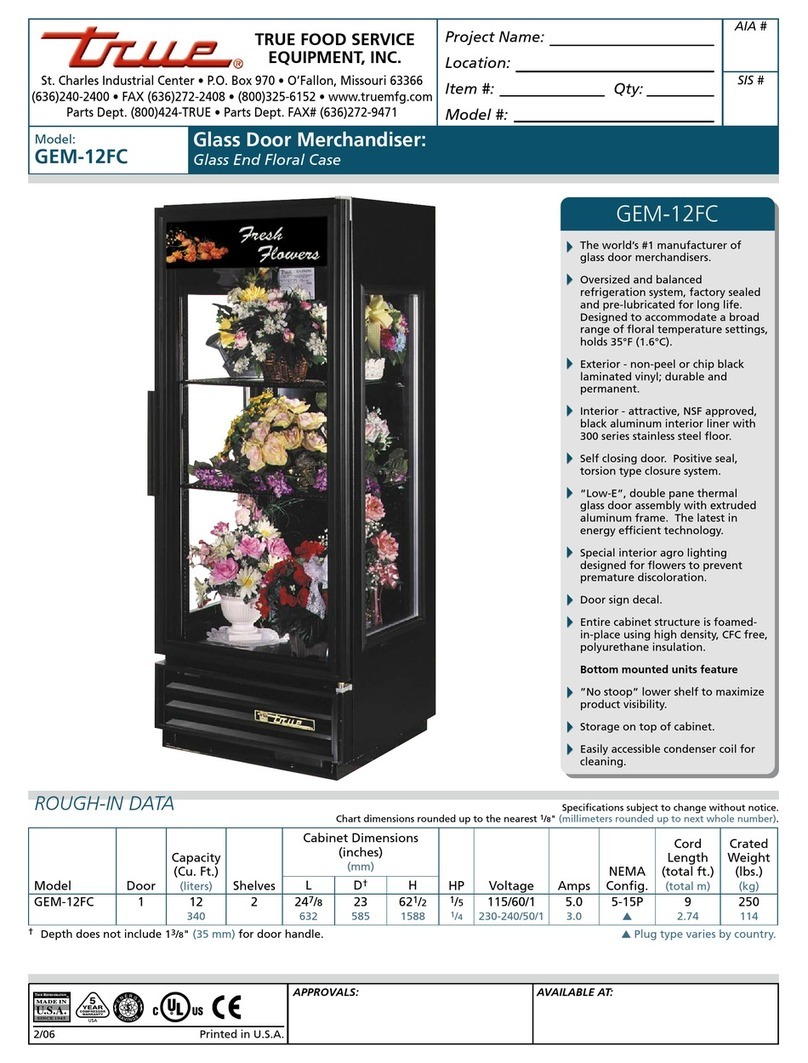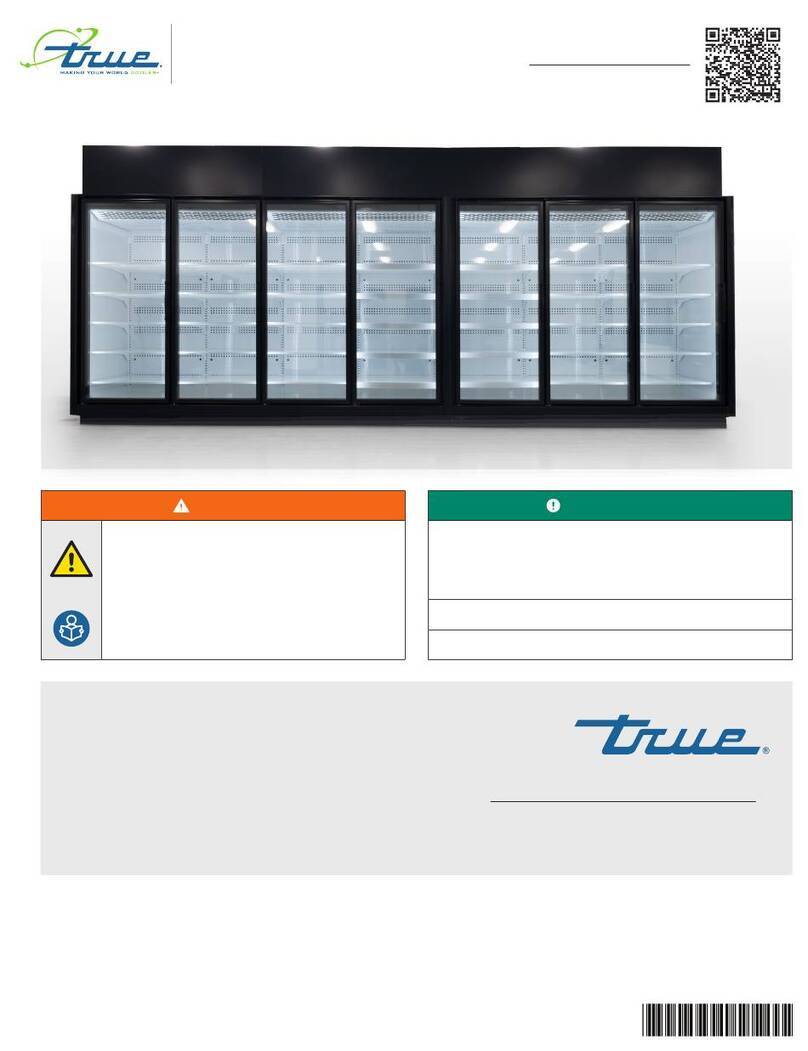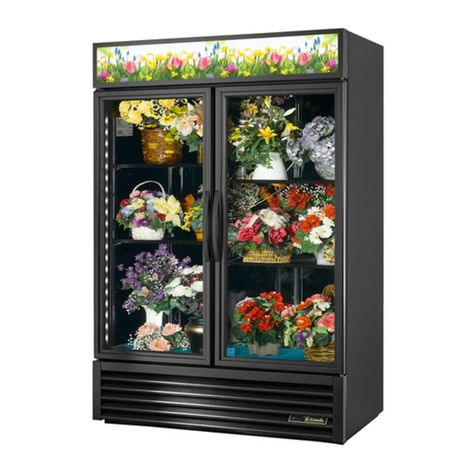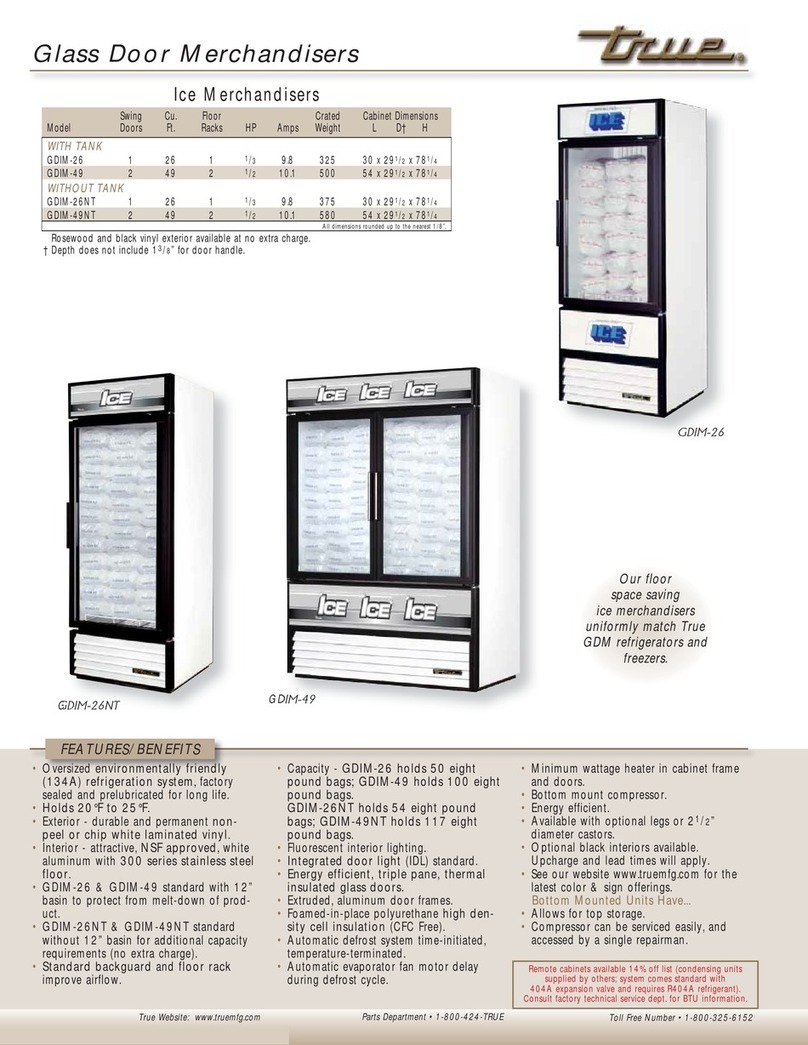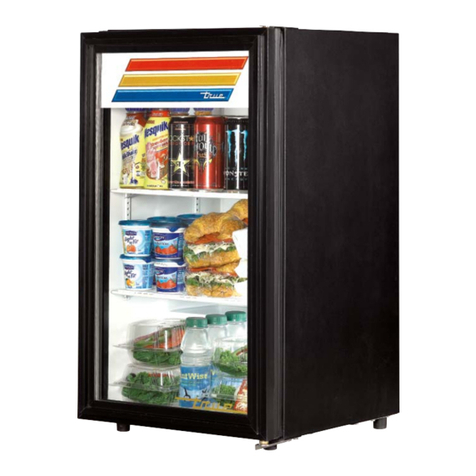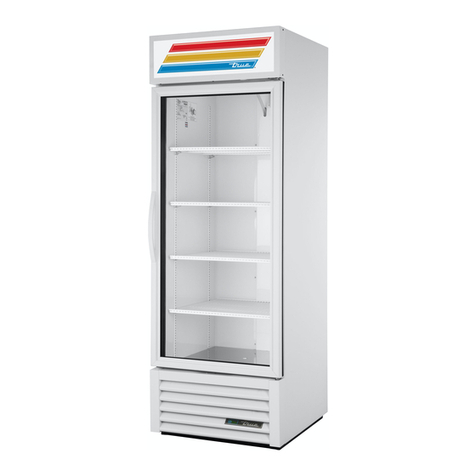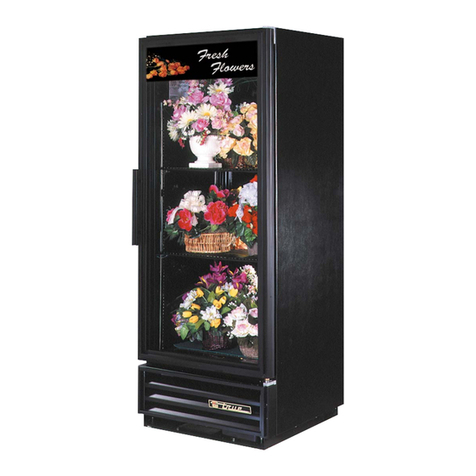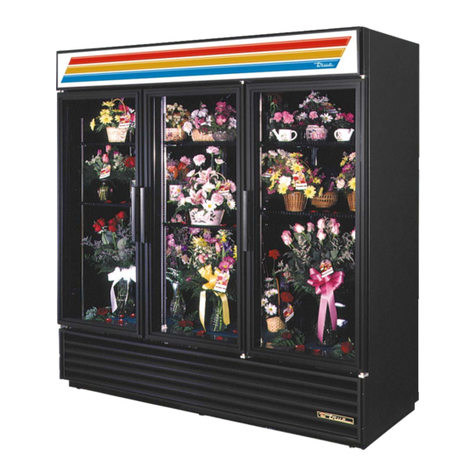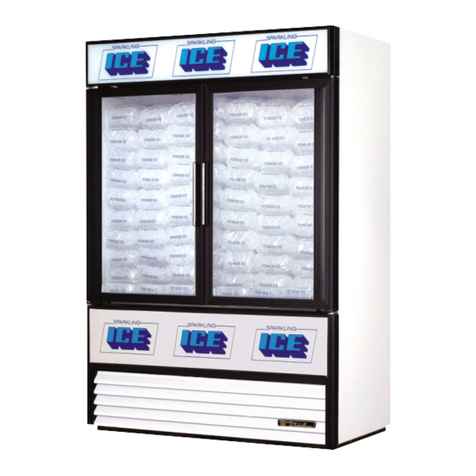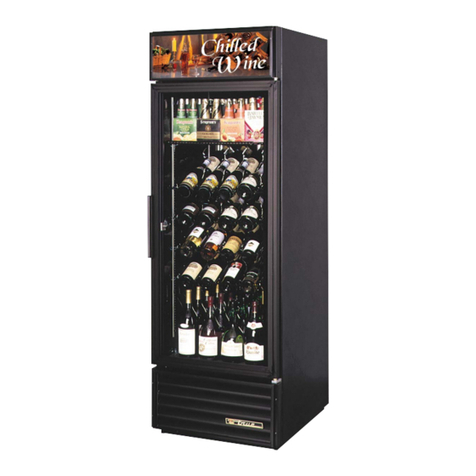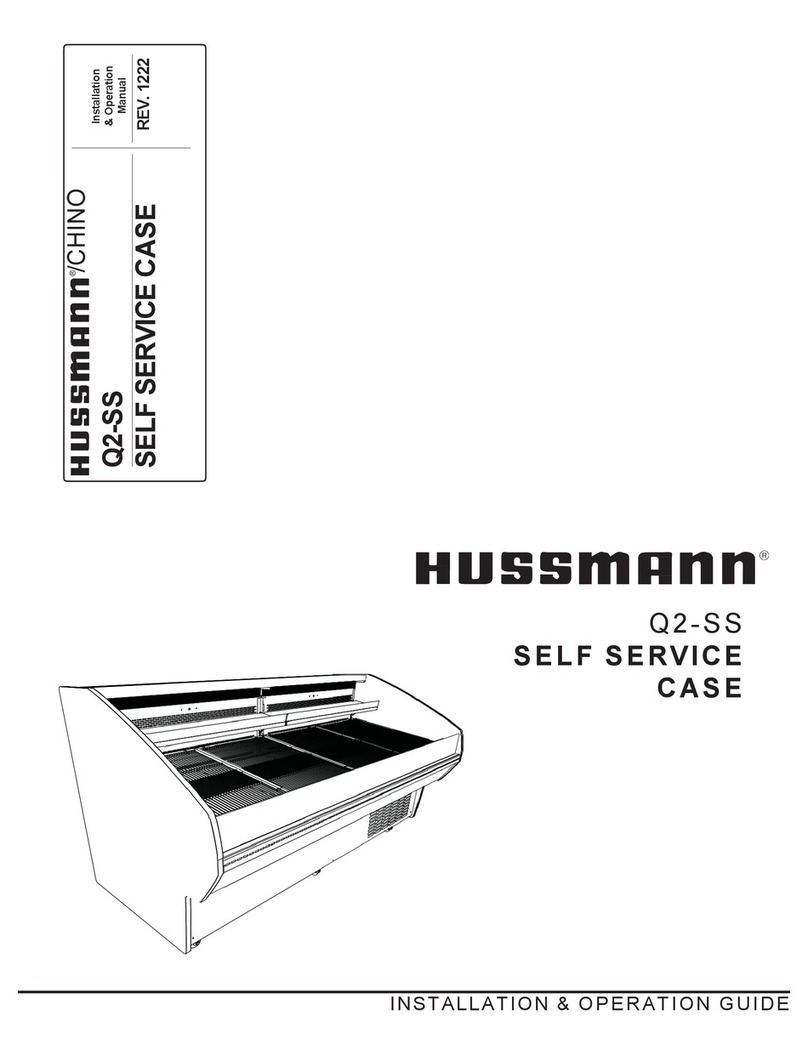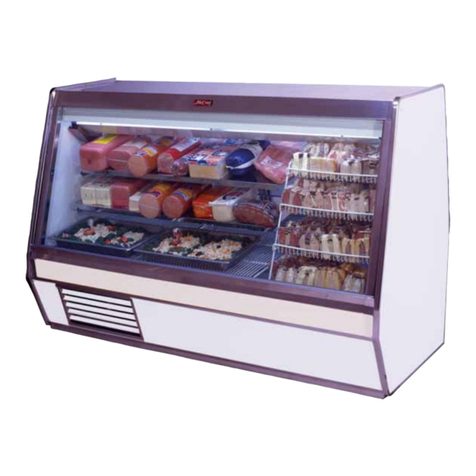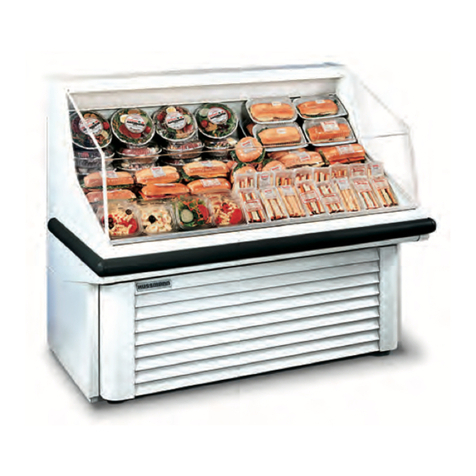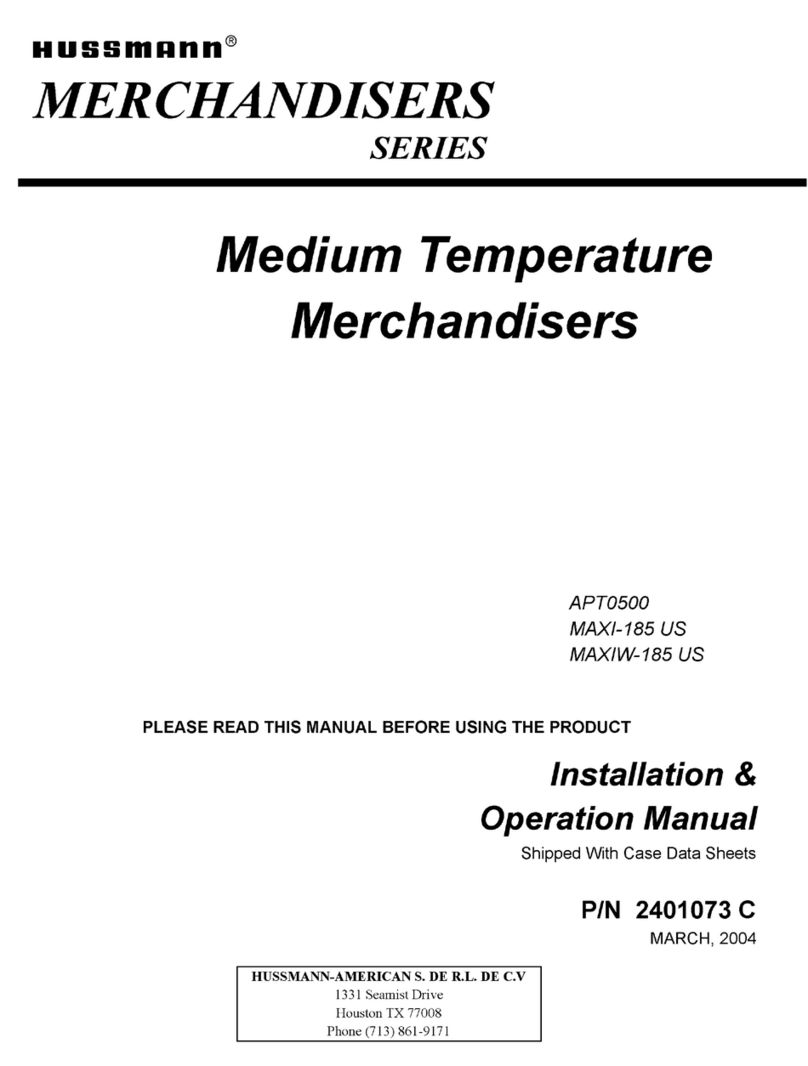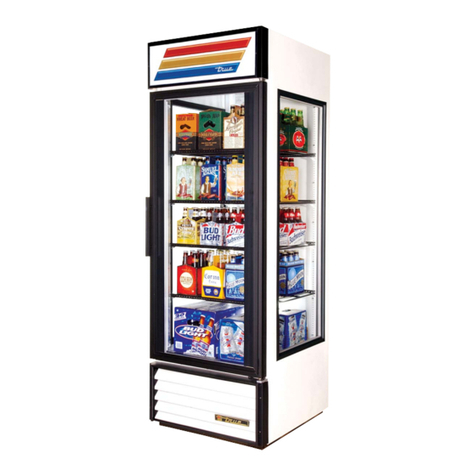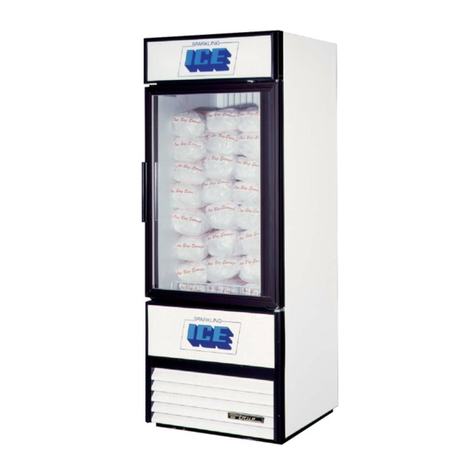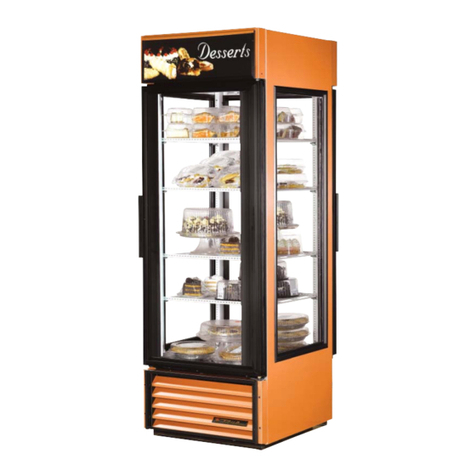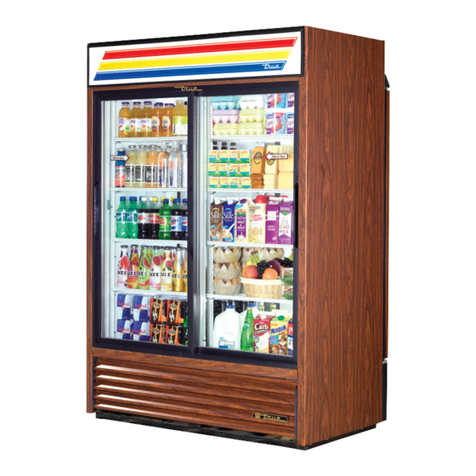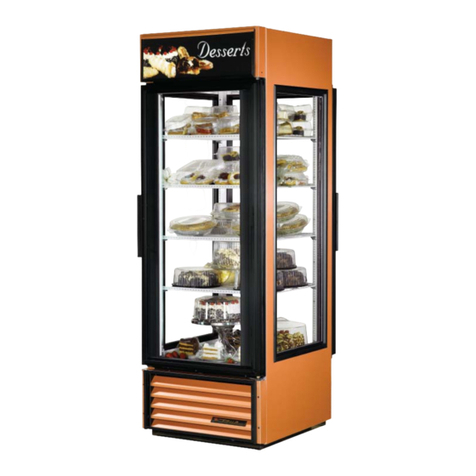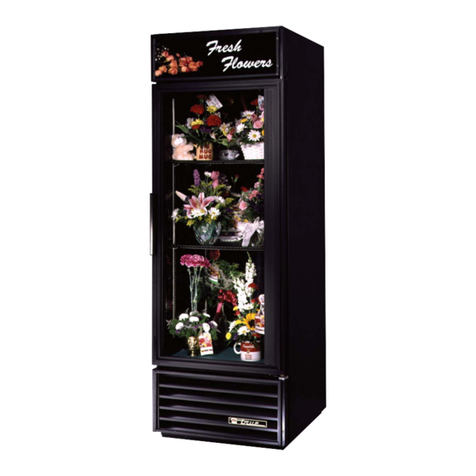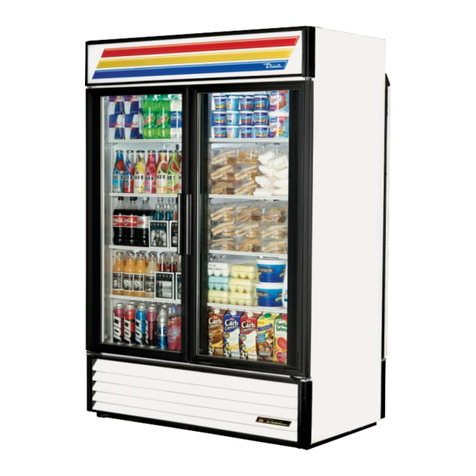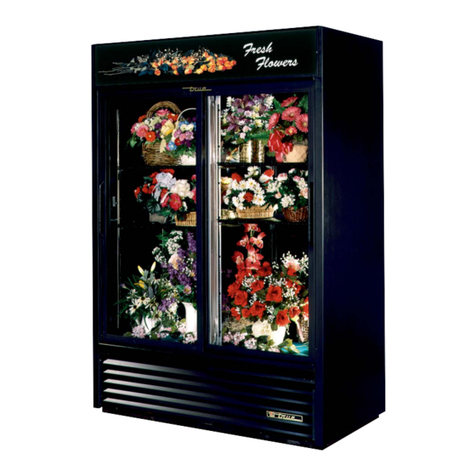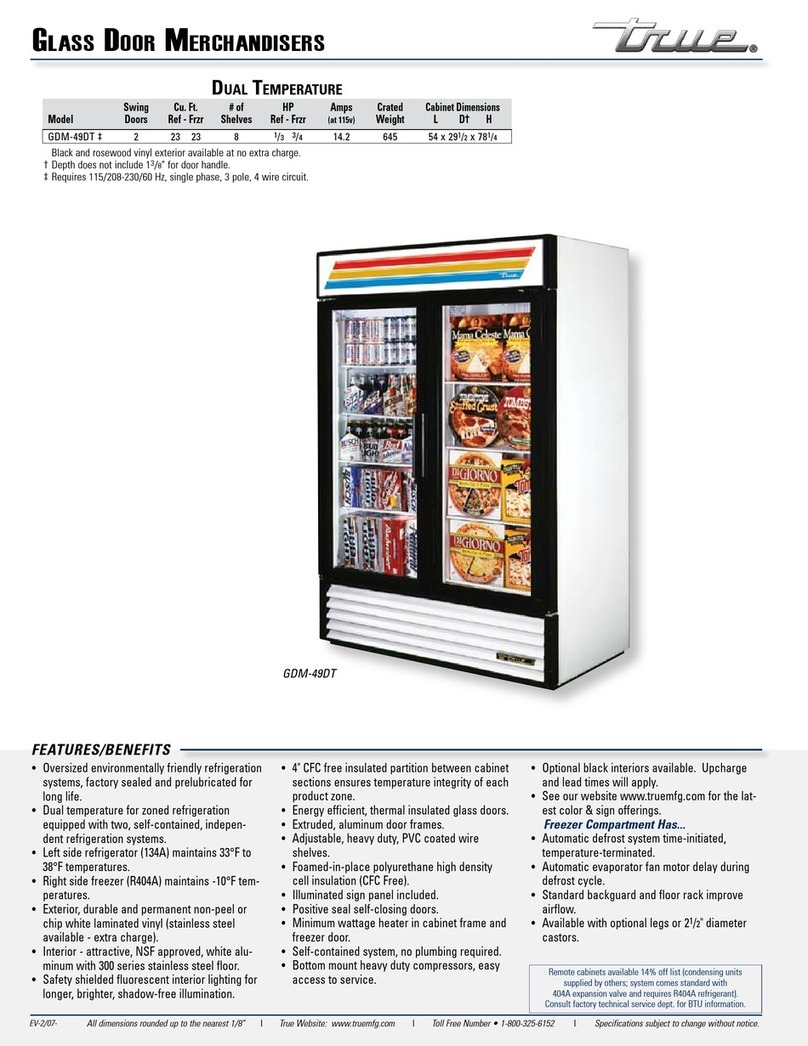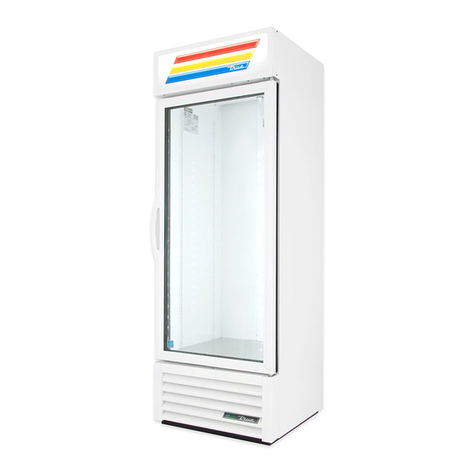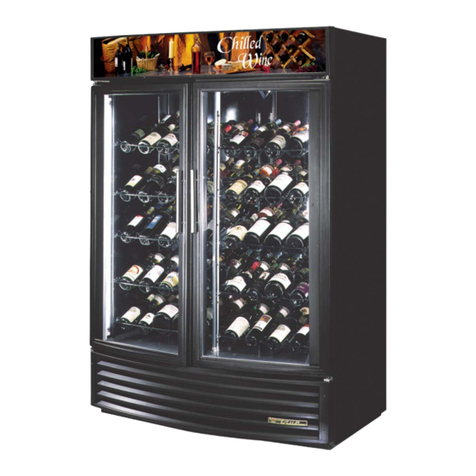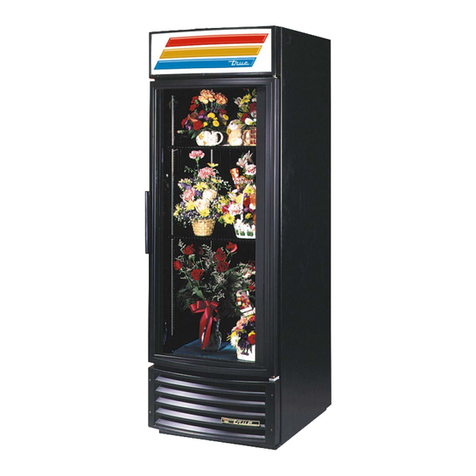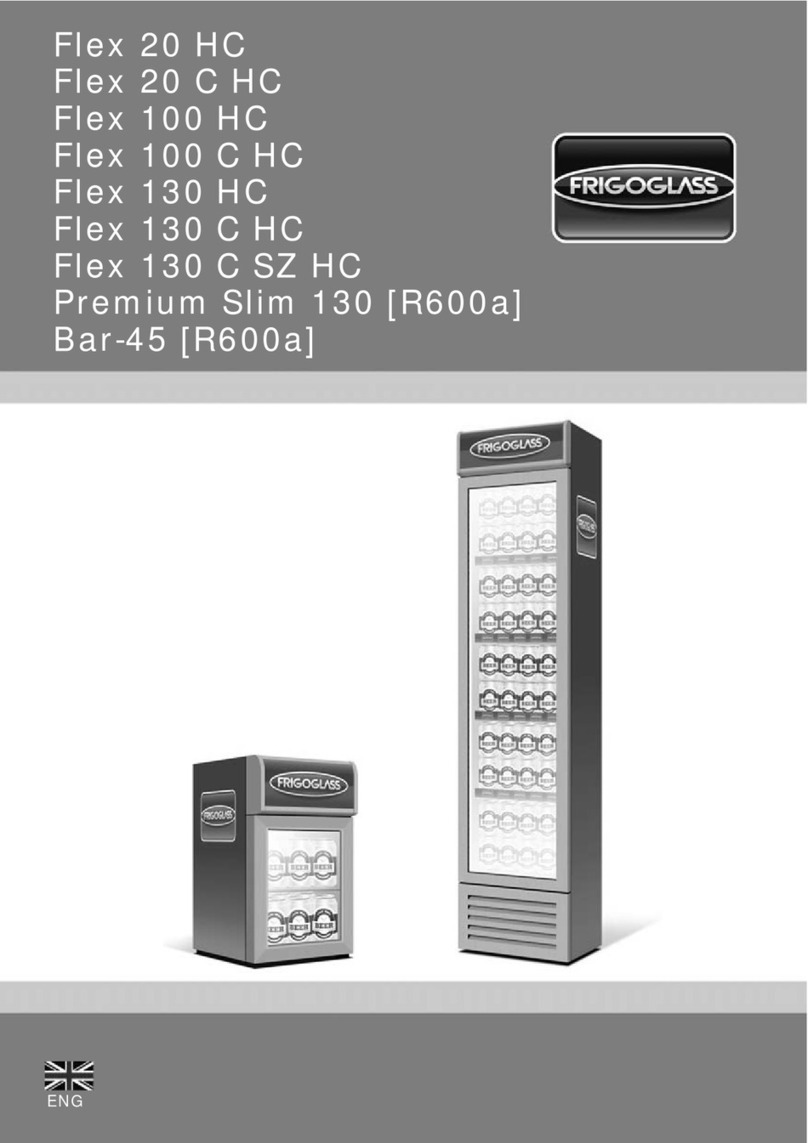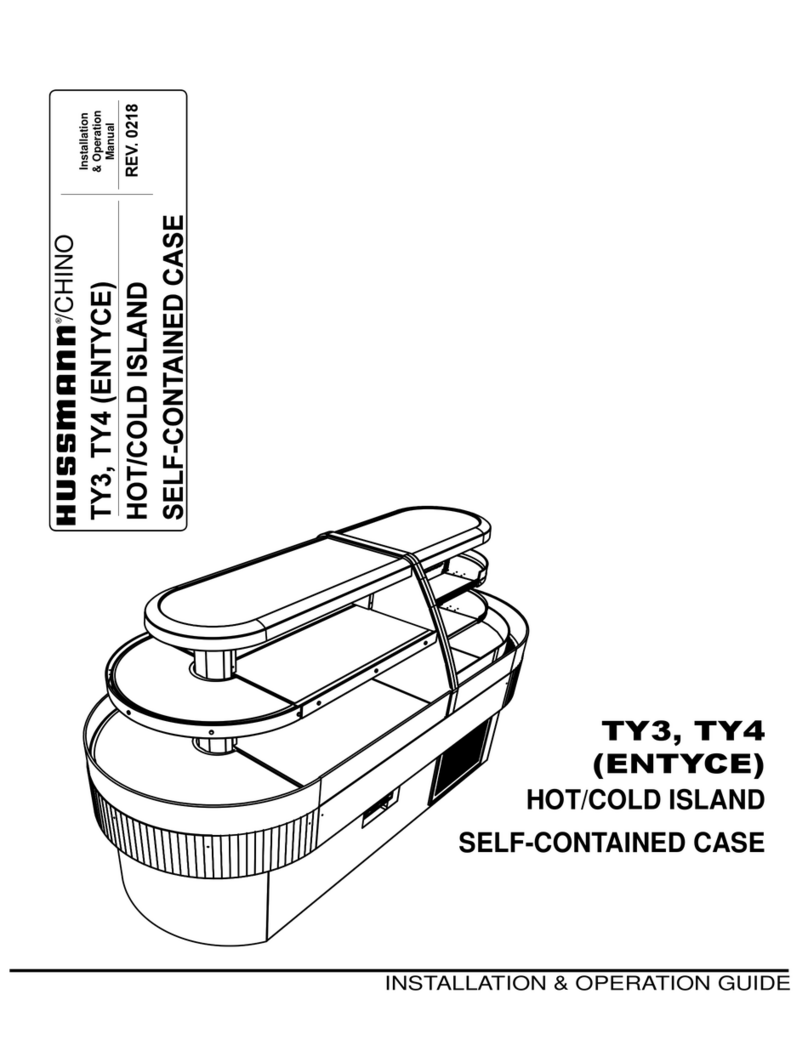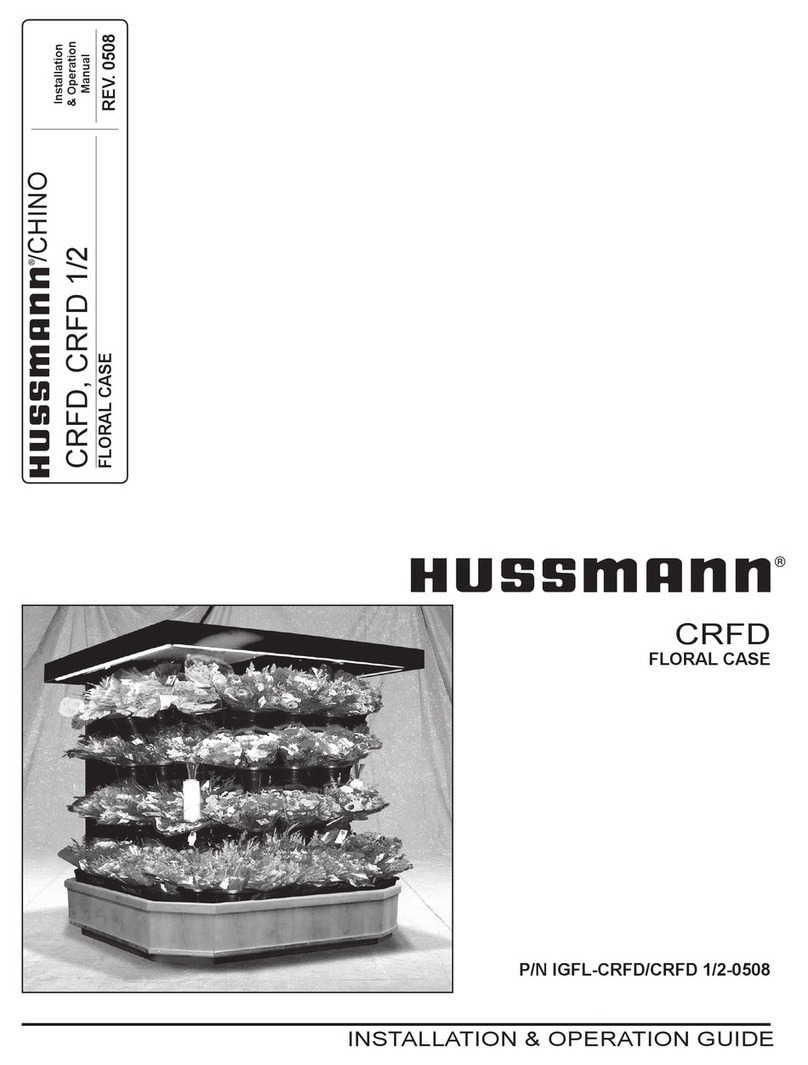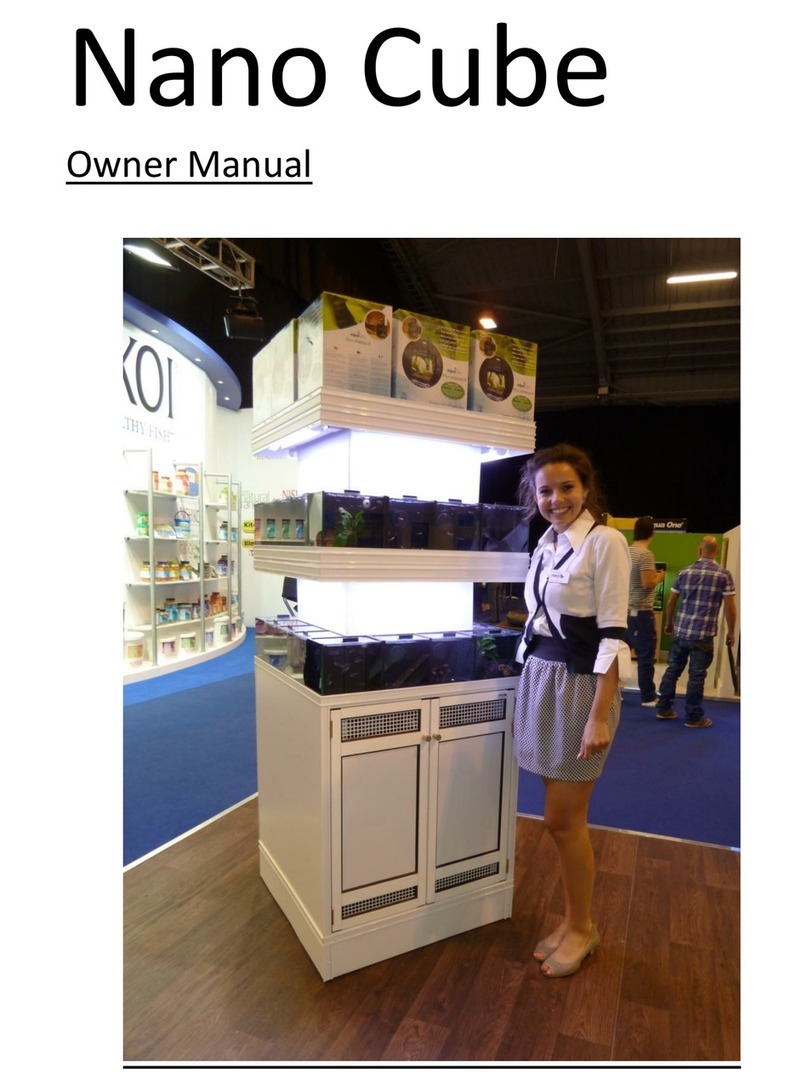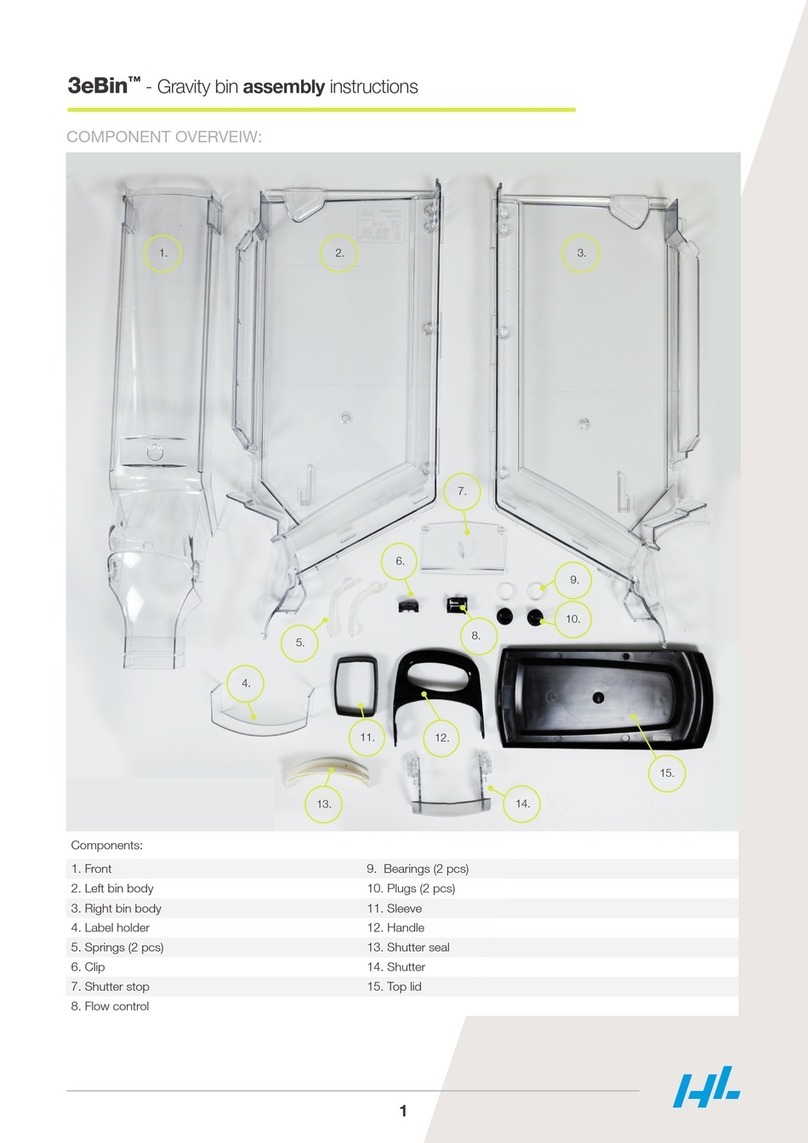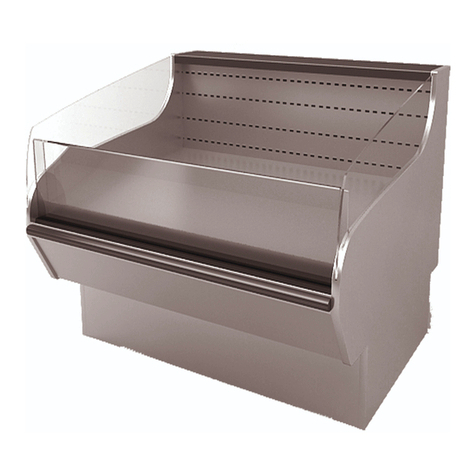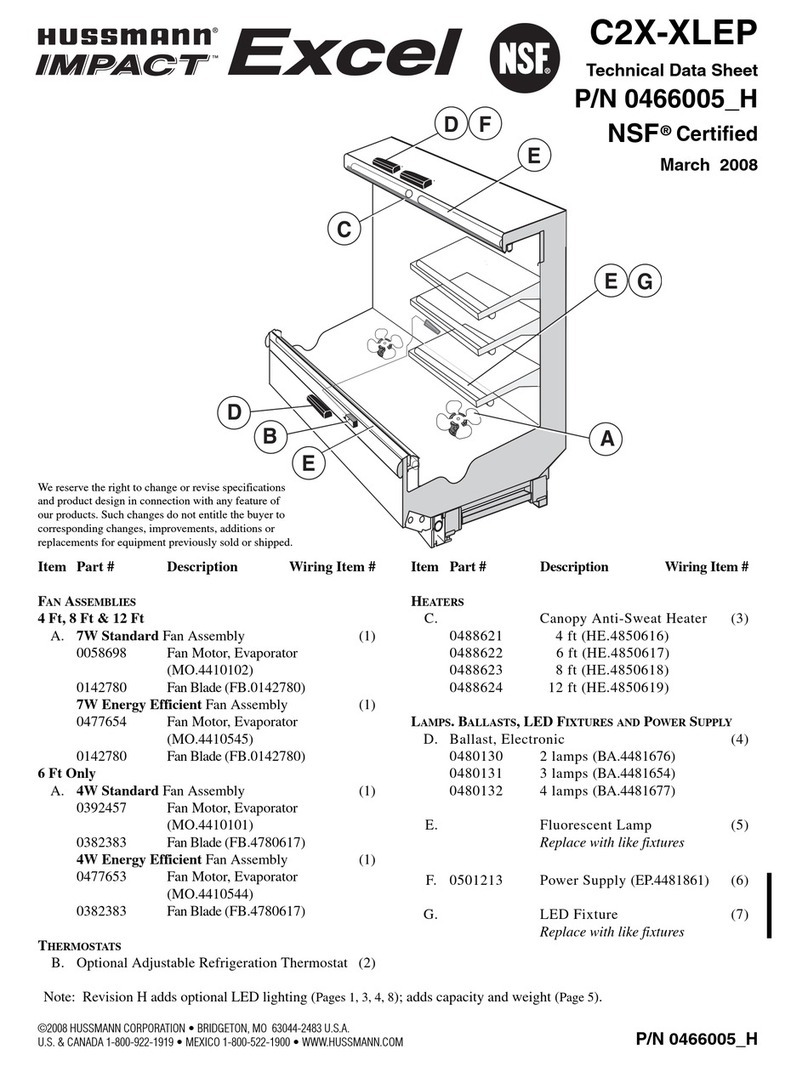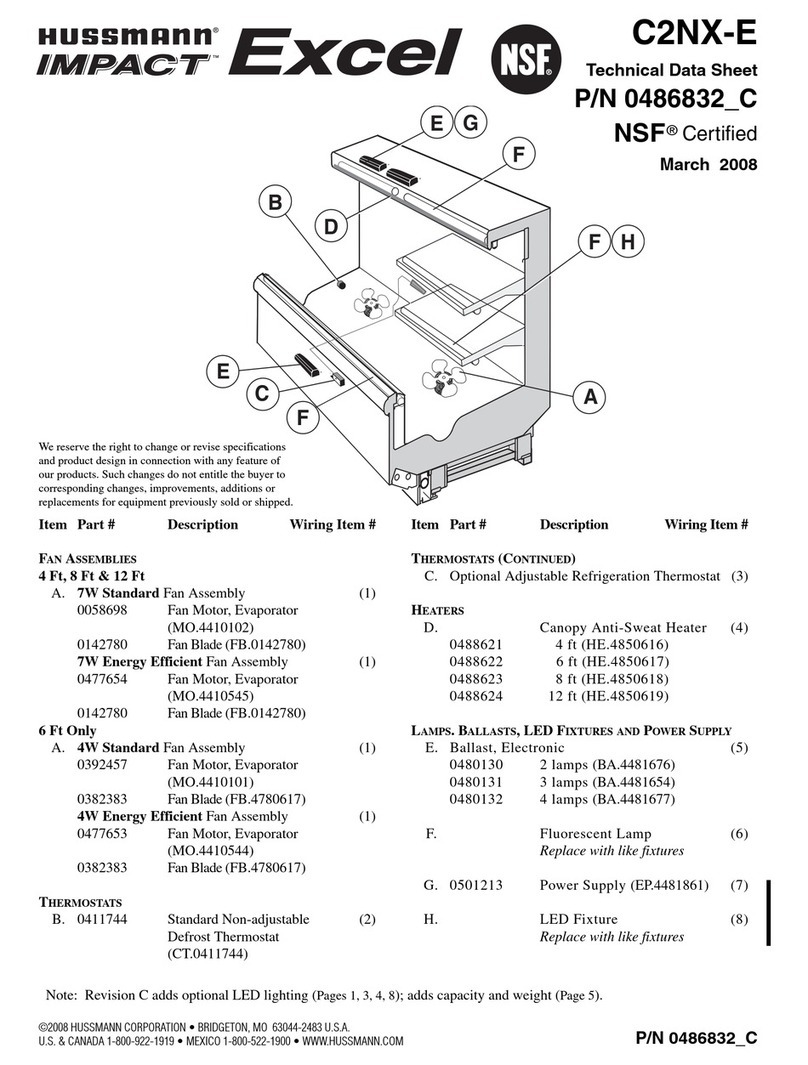
TOAM | OPEN AIR MERCHANDISER truemfg.com
TEC_TM_012 REV. B09/25/2020Page 4 of 20
Installation
Ownership
To ensure that your unit works properly from the first day, it must
be installed properly. We highly recommend a trained refrigeration
mechanic and electrician install your TRUE equipment. The cost of
a professional installation is money well spent.
Before you start to install your TRUE unit, carefully inspect it for
freight damage. If damage is discovered, immediately file a claim
with the delivery freight carrier.
TRUE is not responsible for damage incurred during shipment.
Cabinet Specification
This appliance is rated for the storage and/or display of
prepackaged or bottled food product.
Cabinet Location
• Appliance tested for IEC to ISO Climate Class 8 [75°F (24°C)
temperature, 55% relative humidity].
• For proper operation, ambient temperatures shall not be
less than 60°F (15.5°C) and no greater than 75°F (24°C), or as
indicated on the serial label.
• Appliance is not suitable for outdoor use.
• Appliance is not suitable for an area where a pressure washer or
hose may be used.
• Ensure the location will provide adequate clearances and
sufficient airflow for the cabinet.
• Ensure the power supply for the cabinet matches the cabinet
specification sheet or cabinet data plate and is within the
rated voltage (+/-5%). Also, that the amp rating of the circuit is
correct and that it is properly grounded.
• The cabinet should always be plugged into its own individual
dedicated electrical circuit. The use of adapter plugs and
extension cords is prohibited.
Notice to Customer
Loss or spoilage of products in your
refrigerator/freezer is not covered
by warranty. In addition to following
recommended installation procedures,
you must run the refrigerator/freezer
for 24 hours prior to usage to verify its
proper operation.
115
Volts Distance In Feet To Center of Load
AMPS 20 30 40 50 60 70 80 90 100 120 140 160
2 14 14 14 14 14 14 14 14 14 14 14 14
3 14 14 14 14 14 14 14 14 14 14 14 12
4 14 14 14 14 14 14 14 14 14 12 12 12
5 14 14 14 14 14 14 14 12 12 12 10 10
6 14 14 14 14 14 14 12 12 12 10 10 10
7 14 14 14 14 14 12 12 12 10 10 10 8
8 14 14 14 14 12 12 12 10 10 10 8 8
9 14 14 14 12 12 12 10 10 10 8 8 8
10 14 14 14 12 12 10 10 10 10 8 8 8
12 14 14 12 12 10 10 10 8 8 8 8 6
14 14 14 12 10 10 10 8 8 8 6 6 6
16 14 12 12 10 10 8 8 8 8 6 6 6
18 14 12 10 10 8 8 8 8 8 8 8 5
20 14 12 10 10 8 8 8 6 6 6 5 5
25 12 10 10 8 8 6 6 6 6 5 4 4
30 12 10 8 8 6 6 6 6 5 4 4 3
35 10 10 8 6 6 6 5 5 4 4 3 2
40 10 8 8 6 6 5 5 4 4 3 2 2
45 10 8 6 6 6 5 4 4 3 3 2 1
50 10 8 6 6 5 4 4 3 3 2 1 1
230
Volts Distance In Feet To Center of Load
AMPS 20 30 40 50 60 70 80 90 100 120 140 160
5 14 14 14 14 14 14 14 14 14 14 14 14
6 14 14 14 14 14 14 14 14 14 14 14 12
7 14 14 14 14 14 14 14 14 14 14 12 12
8 14 14 14 14 14 14 14 14 14 12 12 12
9 14 14 14 14 14 14 14 14 12 12 12 10
10 14 14 14 14 14 14 14 12 12 12 10 10
12 14 14 14 14 14 14 12 12 12 10 10 10
14 14 14 14 14 14 12 12 12 10 10 10 8
16 14 14 14 14 12 12 12 10 10 10 8 8
18 14 14 14 12 12 12 10 10 10 8 8 8
20 14 14 14 12 10 10 10 10 10 8 8 8
25 14 14 12 12 10 10 10 10 8 8 6 6
30 14 12 12 10 10 10 8 8 8 6 6 6
35 14 12 10 10 10 8 8 8 8 6 6 5
40 14 12 10 10 8 8 8 6 6 6 5 5
50 12 10 10 8 6 6 6 6 6 5 4 4
60 12 10 8 6 6 6 6 6 5 4 4 3
70 10 10 8 6 6 6 5 5 4 4 2 2
80 10 8 8 6 6 5 5 4 4 3 2 2
90 10 8 6 6 5 5 4 4 3 3 1 1
100 10 8 6 6 5 4 4 3 3 2 1 1
Wire Gauge Chart
CLEARANCES
TOP SIDES BACK
TOAM 8" (204 mm) 0" (0 mm) 3" (77 mm)
WARNING – Warranty is void if ventilation is insufficient.
Prior to Installation
